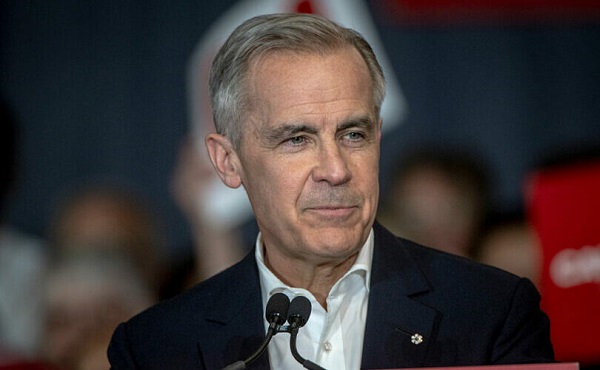Alberta
This is how a Local Musician is giving back to her Community

Kate Stevens is a local Calgarian and Bishop Carroll High School Alumni making a splash in the Canadian music industry with her original music and community investment initiatives. A talented singer-songwriter, she plays the ukulele, piano and guitar and writes all of her own music.
Growing up in a musical household, Kate’s passion for music began at an early age and stayed with her all through her school years, eventually landing her in the music program at Bishop Carroll High School in Southwest Calgary. The education structure at BCHS allowed Kate to focus strongly on her love of music and develop as a young artist, impressively recording an entire studio album during her senior year. She also sang in choir and vocal jazz groups, building lasting connections within her high school and across the Calgary music community.
Just 20 years old, Kate graduated from BCHS in 2017, the same year she released her debut EP, Handmade Rumors. Since graduation, things have been crazy for Kate. From bringing home YYC Music Awards Female Artist of the Year in 2018 to 4 nominations at the 2019 YYC Music Awards, releasing another single and launching the Youth Musicians of Music Mile Alliance (YOMOMMA) to help nurture young musicians in Calgary, busy is an understatement. However, despite her exciting rise and packed schedule, Kate remains deeply invested in her community, and recently launched a new initiative to give back to the BCHS program that helped her get her own start. Using funds from a recent licensing agreement for one of her songs, she has elected to sponsor an annual scholarship for a BCHS vocal student in their final year.
“I was lucky to attend Bishop Carroll High School, “says Kate, “the incredible music program there helped me to develop as an artist, and I would like to give financial support to future musicians.” At $250 dollars a year, the scholarship will be awarded by the BCHS Choir Director to a student who shows exemplary leadership skills and wants to pursue music after graduation. Having been on the receiving end of scholarships throughout her own high school career, Kate is aware of the positive impact these types of grants can have on the lives of developing youth, and wanted to be a part of the process that helps young musicians chase their dreams. “If I can support someone in this industry and really encourage the idea that music is important, then I’ve done my job.”
Currently, all of Kate’s upcoming performances have been cancelled as a result of COVID-19. Although she misses interacting with crowds and performing on stage, she remains optimistic and excited for the future. To hear her music and read more about her story, visit https://www.katestevensmusic.com.
Check out WeMaple video in partnership with Calgary Arts Development featuring Kate Stevens here.
For more stories, visit Todayville Calgary.
Alberta
Alberta takes big step towards shorter wait times and higher quality health care

From the Fraser Institute
On Monday, the Smith government announced that beginning next year it will change the way it funds surgeries in Alberta. This is a big step towards unlocking the ability of Alberta’s health-care system to provide more, better and faster services for the same or possibly fewer dollars.
To understand the significance of this change, you must understand the consequences of the current (and outdated) approach.
Currently, the Alberta government pays a lump sum of money to hospitals each year. Consequently, hospitals perceive patients as a drain on their budgets. From the hospital’s perspective, there’s little financial incentive to serve more patients, operate more efficiently and provide superior quality services.
Consider what would happen if your local grocery store received a giant bag of money each year to feed people. The number of items would quickly decline to whatever was most convenient for the store to provide. (Have a favourite cereal? Too bad.) Store hours would become less convenient for customers, alongside a general decline in overall service. This type of grocery store, like an Alberta hospital, is actually financially better off (that is, it saves money) if you go elsewhere.
The Smith government plans to flip this entire system on its head, to the benefit of patients and taxpayers. Instead of handing out bags of money each year to providers, the new system—known as “activity-based funding”—will pay health-care providers for each patient they treat, based on the patient’s particular condition and important factors that may add complexity or cost to their care.
This turns patients from a drain on budgets into a source of additional revenue. The result, as has been demonstrated in other universal health-care systems worldwide, is more services delivered using existing health-care infrastructure, lower wait times, improved quality of care, improved access to medical technologies, and less waste.
In other words, Albertans will receive far better value from their health-care system, which is currently among the most expensive in the world. And relief can’t come soon enough—for example, last year in Alberta the median wait time for orthopedic surgeries including hip and knee replacements was 66.8 weeks.
The naysayers argue this approach will undermine the province’s universal system and hurt patients. But by allowing a spectrum of providers to compete for the delivery of quality care, Alberta will follow the lead of other more successful universal health-care systems in countries such as Australia, Germany, the Netherlands and Switzerland and create greater accountability for hospitals and other health-care providers. Taxpayers will get a much better picture of what they’re paying for and how much they pay.
Again, Alberta is not exploring an untested policy. Almost every other developed country with universal health care uses some form of “activity-based funding” for hospital and surgical care. And remember, we already spend more on health care than our counterparts in nearly all of these countries yet endure longer wait times and poorer access to services generally, in part because of how we pay for surgical care.
While the devil is always in the details, and while it’s still possible for the Alberta government to get this wrong, Monday’s announcement is a big step in the right direction. A funding model that puts patients first will get Albertans more of the high-quality health care they already pay for in a timelier fashion. And provide to other provinces an example of bold health-care reform.
Alberta
Alberta’s embrace of activity-based funding is great news for patients

 From the Montreal Economic Institute
From the Montreal Economic Institute
Alberta’s move to fund acute care services through activity-based funding follows best practices internationally, points out an MEI researcher following an announcement made by Premier Danielle Smith earlier today.
“For too long, the way hospitals were funded in Alberta incentivized treating fewer patients, contributing to our long wait times,” explains Krystle Wittevrongel, director of research at the MEI. “International experience has shown that, with the proper funding models in place, health systems become more efficient to the benefit of patients.”
Currently, Alberta’s hospitals are financed under a system called “global budgeting.” This involves allocating a pre-set amount of funding to pay for a specific number of services based on previous years’ budgets.
Under the government’s newly proposed funding system, hospitals receive a fixed payment for each treatment delivered.
An Economic Note published by the MEI last year showed that Quebec’s gradual adoption of activity-based funding led to higher productivity and lower costs in the province’s health system.
Notably, the province observed that the per-procedure cost of MRIs fell by four per cent as the number of procedures performed increased by 22 per cent.
In the radiology and oncology sector, it observed productivity increases of 26 per cent while procedure costs decreased by seven per cent.
“Being able to perform more surgeries, at lower costs, and within shorter timelines is exactly what Alberta’s patients need, and Premier Smith understands that,” continued Mrs. Wittevrongel. “Today’s announcement is a good first step, and we look forward to seeing a successful roll-out once appropriate funding levels per procedure are set.”
The governments expects to roll-out this new funding model for select procedures starting in 2026.
* * *
The MEI is an independent public policy think tank with offices in Montreal, Ottawa, and Calgary. Through its publications, media appearances, and advisory services to policymakers, the MEI stimulates public policy debate and reforms based on sound economics and entrepreneurship.
-

 2025 Federal Election2 days ago
2025 Federal Election2 days agoHarper Endorses Poilievre at Historic Edmonton Rally: “This Crisis Was Made in Canada”
-

 conflict2 days ago
conflict2 days agoZelensky Alleges Chinese Nationals Fighting for Russia, Calls for Global Response
-

 2025 Federal Election1 day ago
2025 Federal Election1 day agoMark Carney’s radical left-wing, globalist record proves he is Justin Trudeau 2.0
-

 2025 Federal Election2 days ago
2025 Federal Election2 days agoAn In-Depth Campaign Trail “Interview” With Pierre Poilievre
-

 Business2 days ago
Business2 days agoTrump’s tariff plan replaces free trade with balanced trade. Globalists hate that.
-

 2025 Federal Election15 hours ago
2025 Federal Election15 hours agoConservative Party urges investigation into Carney plan to spend $1 billion on heat pumps
-

 2025 Federal Election2 days ago
2025 Federal Election2 days agoElection Security Briefing Confirms CCP-Linked Operation Boosted Carney
-

 2025 Federal Election1 day ago
2025 Federal Election1 day agoDon’t double-down on net zero again




